1. Lisa and Liberty.
The Mona Lisa and the Statue of Liberty, two icons of French culture—but one is by an Italian who just
happened to be in France, and the other was made for a country at the other side of an ocean. Between them, they
exemplify the two main ways in which the connections between France and other countries has be reflected in the arts:
the import of foreign styles into France, and latterly the export of French style abroad. This class
will begin with a rapid menu of the classes to follow.
The rest of the first hour will look at some of the ways in which French renaissance and baroque art grew from Italian
seeds, especially those from Florence: François I's invitation of Leonardo da Vinci and other artists to work at
Fontainebleau, the marriage of his son and great grandson to Medici princesses, and the role of the Italian-born Lully
to become the master of music for the entire dominion of Louis XIV.
Starting with the Statue of Liberty, the second hour will range more widely, looking at the political context of its
creation, the significant differences between America and Britain in terms of their relationship with France, difference
of attitude as reflected in language, and (following a theme introduced in the first hour) the flourishing of ballet
in New York under the inspiration of George Balanchine. rb.
The script, videos, and images will be posted immediately after class.
Here are brief bios of the artists, composers, and writers considered in the class, listed in order of birth.
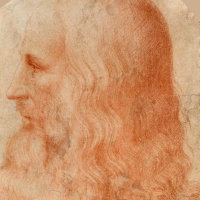 |
Leonardo da Vinci, 1452–1519. Italian painter and polymath.
With Michelangelo and Raphael, one of the triumvirate of artistic geniuses that crown the High Renaissance. He trained in Florence with the painter Andrea Verrocchio before moving to the court of Ludovico Sforza in Milan. He spent the last years of his life at the court of François I in France. The naturalism and luminosity of his painting, and his effects of sfumato (or modeling as if by smoke), were widely influential. It is his notebooks, however, that are the best testament to the range of his genius, containing remarkable observations of the natural world, and mechanical inventions centuries before their time.
|
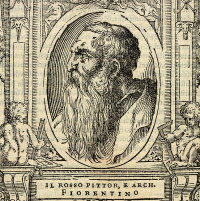 |
Rosso Fiorentino, 1494–1540. Italian painter.
"The Redhead from Florence" is the nickname of Giovanni Battista di Jacopo, an Italian Mannerist painter who executed the celebrated lute-playing cherub in the Uffizi, and a lot of religious work. He was brought to Fontainebleau in 1530 by François I, where he executed the murals of the grand Gallery, along with Francesco Primaticcio, thus essentially founding the "First School of Fontainebleau."
|
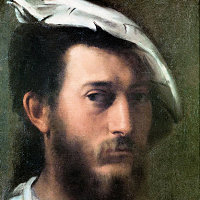 |
Francesco Primaticcio, 1504–70. Italian artist.
After training with Giuliano Romano in his native Bologna, Primaticcio worked for a while at the Palazzo del Tè in Mantua, before joining Rosso Fiorentino at Fontainebleau in 1532. After Rosso's death in 1540, he took charge of all Fontainebleau projects, which included paintings in his own Mannerist style and various sculptural and architectural projects, such as Cathérine de Médicis' monument at Saint Denis.
|
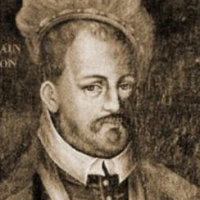 |
Germain Pilon, 1525–90. French sculptor.
After training with his father (also a sculptor) Pilon began working in an Italian-influenced style. Some of his best works are funerary sculptures, including several monuments in the Abbey of Saint Denis, commissioned by Cathérine des Médicis, his principal benefactor.
|
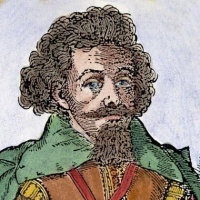 |
Michael Praetorius, 1571–1621. German composer.
Though a polyglot and educated in theology as well as music, he began his career as a church organist and then as court musician to the Duke of Brunswick. The Duke's successor, however, encouraged him to produce religious music in what was now the Lutheran tradition. His published collections of dance music, sacred music, and theoretical writings tell us much of what we know of the music of his time.
|
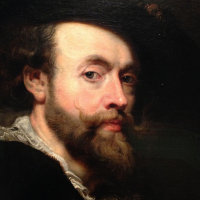 |
Peter Paul Rubens, 1577–1640. Flemish painter and diplomat.
One of the giants of baroque art, Rubens developed the style of Titian into a powerful rhetoric applied equally to sacred and profane subjects, and exerted enormous influence in Spain, England, and France as well as in his native Flanders, continued in the work of his many pupils. His position at so many courts also made him invaluable as a diplomat.
|
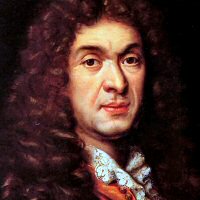 |
Jean Baptiste Lully, 1632–87. French composer of Italian origin.
Lully became master of music to Louis XIV, writing music in all genres, but most especially operas and ballets. His operas include Alceste (1675), Atys (1676), Persée (1682), and Armide (1686). For most of his career, no new music could be performed in France without his approval.
|
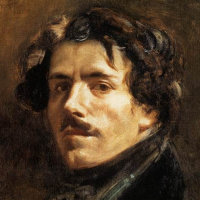 |
Eugène Delacroix, 1798–1863. French painter.
The leading French painter of the Romantic movement, he is known for his brilliant Rubensian color and his dramatic compositions. Especially in the first half of his career, these included political themes, such as The Massacre at Chios (1824) and Liberty Leading the People (1830), as well as subjects from Romantic literature. He also visited North Africa, and was constantly fascinated by the exotic.
|
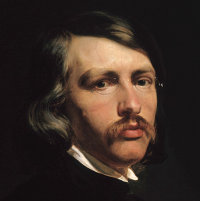 |
Emanuel Leutze, 1816–68. German-American painter.
Leutze was born in Germany, came to America with his family at age 9, and began his career here. But he returned to Düsseldorf from 1841 to 1859, and it was there that he painted his iconic Washington Crossing the Delaware, modeled in part by other American painters who had come over to study with him.
|
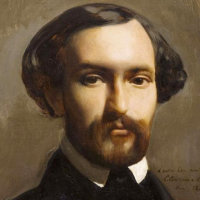 |
Charles Gounod, 1818–93. French composer.
Gounod was the leading French opera composer in the third quarter of the 19th century, achieving fame with Faust and Roméo et Juliette His Philémon et Baucis, which came in between these in 1860, is a lighter opéra comique based on Ovid's story.
|
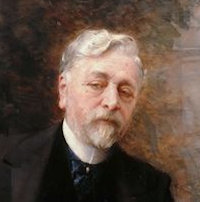 |
Gustave Eiffel, 1832–1923. French engineer.
Eiffel's parents took their name from the Eifel Mountains in Western Germany from which they had come, but Gustave had an entirely French education, partly supervised by his uncle, a scientist and inventor. His early engineering work building bridges for railway companies in France and Beligium enabled him to found his own company, which was responsible for his two most famous projects: the inner structure of The Statue of Liberty (1886) and the Eiffel Tower built for the Paris Exposition of 1889.
|
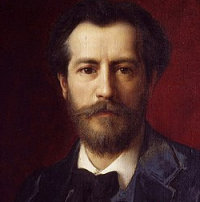 |
Frédéric Auguste Bartholdi, 1834–1904. French sculptor.
Bartholdi was born in Colmar, Alsace, and did much of his work in that region. He is best known, however, for his Liberty Enlightening the World, which he developed following a suggestion by Édouard de Laboulaye, and which was installed in New York Harbor in 1866.
|
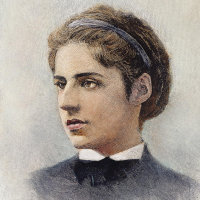 |
Emma Lazarus, 1849–87. American poet.
Born into a prominent New York Jewish family, Emma was privately educated and became fluent in several languages, publishing translationd of Goethe, Heine, and others. She is best known for her poem The New Colossus, published in 1883 to raise money for completion of the Statue of Liberty, a cause dear to her because of her volunteer work providing aid to Jewish refugees.
|
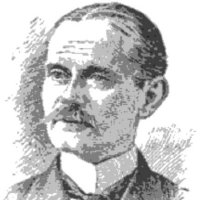 |
Edward Moran, 1862–1935. American painter.
Born in Lancashire, Moran emigrated with his family to Maryland in 1844. After working as apprentice to a painter in Philadelphia, he went to England to study at the Royal Academy, then returned to America, where he developed a successful career as a marine painter, working in New York and for a while in Paris.
|
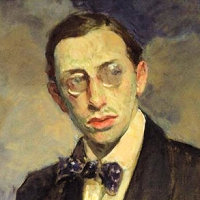 |
Igor Stravinsky, 1882–1971. Russian-American composer.
Starting as an enfant terrible in Paris with the ballets he wrote for Serge Diaghilev, he gradually pared back his resources, developing a neo-classical style between about 1930 and 1955, but eventually turning his back on tonality.
|
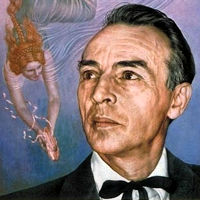 |
George Balanchine, 1904–83. Georgian-American choreographer.
After work with Diaghilev's Ballets Russes, including the pioneering neo-classical Apollon musagète (1928, with Stravinsky) and The Prodigal Son (1929, with Prokofiev), he moved to America, where he eventually co-founded the New York City Ballet, remaining its artistic director for 35 years. One of the most influential choreographers of the century, he is especially noted for his abstract works with minimal decor but the greatest musicality.
|



































































